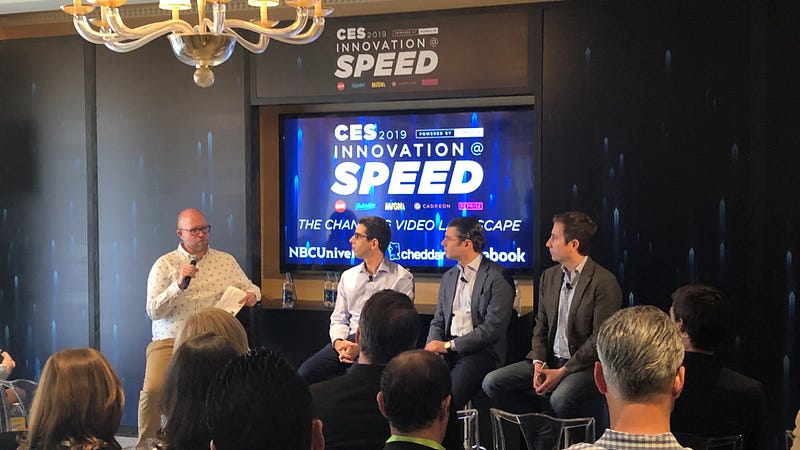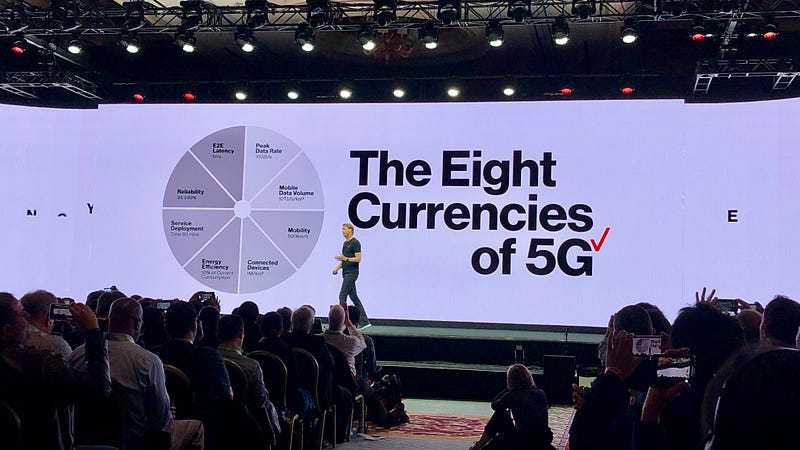
Welcome back to our daily recap of CES 2019. Today marks the official kickoff of the annual consumer tech conference, as over 200,000 attendees flooded the convention halls to check out the latest in technology and innovation. In an opening remarks this morning, Gary Shapiro, President and CEO of the CTA (organizer of CES), listed off 5G, smart cities, artificial intelligence, autonomous vehicles, and a newly minted sports zone (dedicated to sports technology and emerging sports media including esports) as key areas to watch at this CES.
Following the opening remarks, IBM CEO Ginni Rometty took the stage to deliver an hour-long keynote on how IBM is working with various companies to come up with next-gen enterprise solutions. Starting with the idea of “deep data,””Š—”Šthe vast amount of data generated by the world and never collected and analyzed”Š—”Šshe was quick to position IBM as a leading researcher in exploring underutilized data sources. For example, the company is working on a new sensor that gathers biometric data from fingernails for disease prediction and tracking, while also working with The Weather Channel to better analyze local weather data for more frequent and accurate forecasts.

To demonstrate her point with partner testimonies, Rometty invited executives from Delta, Walmart, and ExxonMobil on stage throughout the keynote for a quick one-on-one chat on how IBM’s enterprise solutions are helping these companies improve operational efficiency and enhance their customer experience. Delta is looking to use the granular weather data insights generated by IBM’s narrow AI to predict in-air turbulence in advance and therefore plan safer flight routes. The airline is also looking to improve the boarding experience by utilizing facial recognition tech for authentication at the gate. Walmart shared some news on its blockchain-based food safety initiative with IBM, saying that it cut the time needed for retracing source for produce from about a week down to just 2.2 seconds. ExxonMobil’s head of research joined IBM on stage to explain how IBM’s quantum computing platform will provide the processing power needed to study oil and other energy resources at atomic level by analyzing molecular data.
Despite utilizing different technologies, the three companies have one thing in common: they all rely on IBM’s enterprise platform for analyzing data and extracting insights in order to optimize their operations. This commonality underscores the significant driving force that technology has become for all industries. All companies are now tech companies”Š—”Šnot because they all suddenly started making gadgets, but because technology has become a necessity for companies to better understand and serve their customers. More importantly, they are all starting to think like a tech company, which draws its competitive advantages from leveraging data to create a better user experience. As IBM’s partners show, many are starting with enterprise solutions rather than consumer-facing initiatives, but it is easy to see that whatever advances companies make on the operational side will eventually trickle down to the consumers and help create a better customer experience.
After the IBM keynote, I made my way to the Wynn Fairway Villas, where IPG Mediabrands’ CES 2019 sessions were already in full swing. Chad Stoller, Global Chief Innovation Officer at UM and Head of IPG Media Lab, kicked things off with an insightful panel discussion on the impact of 5G connectivity. He was joined by Ina Fried, Chief Technology Correspondent from Axios, and Nilay Patel, Editor in Chief of The Verge, as they laid out the various media opportunities that marketers can look forward to unlocking with 5G while remain clear-sighted on the fragmented market reality that will likely result in a drawn-out implementation phrase and long adoption curve.

Next up, Adam Simon, EVP, Head of Strategy for the Lab, led an engaging panel discussion on the changing video landscape with executives from NBCUniversal, Cheddar, and Facebook. In less than an hour, the panelists sound off on topics ranging from subscription fatigue to multichannel distribution, addressing the opportunities and challenges in entering international markets and improving ad experience on streaming media. While different companies take different approaches to monetize their video products, there is a consensus among the panelists that the ad experience will have to take into account the varying viewer behavior on each platform, but also create an integrated ad buying experience across channels for brands.
Closing out the day was the keynote address from Verizon CEO Hans Vestberg. Prior to the keynote, Vestberg raised some eyebrows by stating in an interview that the former AOL and Yahoo media companies that Verizon acquired will “need to survive on their merits” and make money without leveraging data from the company’s wireless and wireline subscribers. This strategic departure was left unaddressed during the keynote, which was entirely devoted to 5G and its transformative capabilities. 5G represents a huge business opportunity for the telecom players, and Verizon obviously wanted to use this keynote as a high-level introduction to the various innovations and business opportunities that 5G promises to unlock in the upcoming fourth industrial revolution powered by A.I. and connected devices.

Throughout the hour-long keynote, Vestberg dutifully went through what Verizon calls “the eight currencies” of 5G, namely, the eight key characteristics that will enable businesses to explore new possibilities. For example, in terms of the fast wireless speed 5G brings (up to 10 gigabits per second), Verizon is working with New York Times to explore what that means for the future of journalism in terms of live news streaming, crowdsourced distribution, and mobile integration of interactive multimedia content. It is also working with Disney’s StudioLab to explore new immersive formats and content production, especially for rendering animation and special effects. To demonstrate 5G networks’ potential in supporting IoT networks, a remote drone flight demo featuring Verizon-owned Skyward company was done on stage to show how it may aid first responders. Showcasing how the low-latency nature of 5G network can unlock new applications in healthcare, Medivis co-founder Dr. Christopher Morley explained how a real-time AR anatomical imaging tool running on 5G network can ensure the success of many brain surgeries.
Overall, the Verizon keynote made a strong case for the wide-ranging applications that 5G will bring to all verticals as it transforms businesses, elevating us to a new standard of connectivity and thus a new level of consumer expectations. From content producers to healthcare providers, from airlines to retailers, every company is rushing to become tech-savvy, for we are now entering an age when the impact of disruptive technologies are starting to manifest across all categories. Most companies know that now, and nowhere is that more evident than at this year’s CES.
Richard Yao
